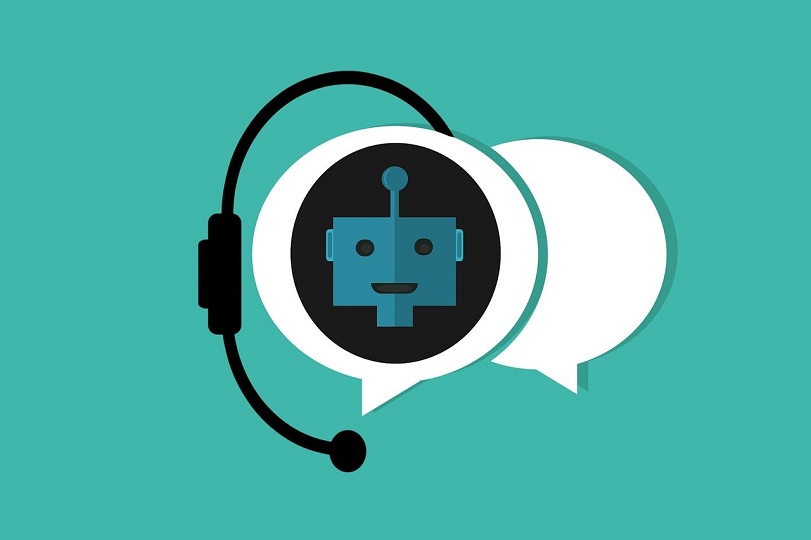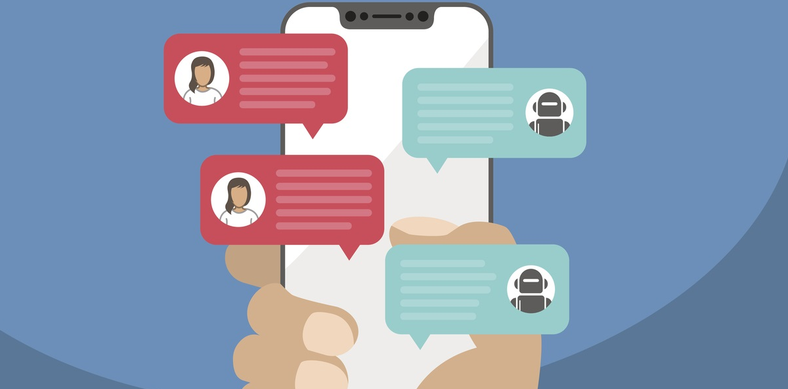Physical Address
304 North Cardinal St.
Dorchester Center, MA 02124
Physical Address
304 North Cardinal St.
Dorchester Center, MA 02124

Business Insider, back in late 2016, guessed that 80% of businesses would be using chatbots by 2020.
Why the prediction of such far-reaching, totally transformative tech?
Chatbots can be used to automate all types of business activities — from payroll, to HR to marketing, sales, customer service and order fulfillment. Indeed chatbots are the future, and that’s now the present.
I’ve been doing marketing for 20 years, and I see the most amazing results with chatbots for marketing (aka the activities that help your business reach new customers).
Chatbots have really high open rates, save time, lower cost per lead, and let you get an advantage over your competition.
If a donkey business wishes to grow up to be a unicorn nowadays, you must use a Messenger chatbot.
Here are some of the biggest reasons why you should think about using a Messenger chatbot in 2020 to grow your business.

Table of Contents
Using a chatbot lets you have 24-hour customer support without having to hire additional staff, thus doing way more with a lot less.
This lets you help more customers and build their trust for your business without making it too hard on yourself.
The chatbot can handle the most common inquiries, which frees your team up for more pressing concerns.
Perhaps the only additional labor involved is setting up, maintaining, and improving the chatbot over time, as well as live chat takeover.
However, compared to the labor involved with having a full-blown support team taking shifts, a chatbot costs way less.

As your chatbot handles more customers, it gathers more of their data that can be used to your advantage.
You learn about your customers, where they’re from, what they like, what they want from you, and so on.
Soon enough, you’ll know your target customer like the back of your hand, and that lets you create more personalized content.
Delivering personalized content lets them know you care about them and you’re paying attention to their needs.
This lets you boost your engagement with customers, making them trust your business even more over time.
Due to the opt-in system of chat marketing, those who get that content are those who wanted it in the first place.
That means you can be more certain that you’re not sending them spam, thus you need not feel guilty at all.

The four main parts of the sales funnel follows the acronym AIDA—awareness, interest, decision, and action.
Your chatbot can be set up to take customers through all four parts of that sales funnel, thus creating a journey for them.
They’re made aware of your business, build interest for your products and services, make them think about purchasing, and finally do it.
Awareness and interest can be done through your content, and decision can be guided through a drip campaign.
The ultimate conversion of that customer is down to how you’re able to guide them through that customer journey.
Once that journey is completed, you have a chance to begin that cycle anew by nurturing them as a potential repeat customer.
The chatbot can show more product recommendations and make the customer decide all over again.

Think about Facebook advertising itself compared to all other advertising methods in the world in terms of their performance.
Advertising on Facebook is in itself much better than all the rest in terms of giving you the web traffic and leads you pay for.
But as online advertising continues to dwindle bit by bit over the years, businesses can’t rely on that alone to grow.
New methods of marketing are experimented with all the time, and that’s where Messenger marketing comes in.
Not only does the largest chat platform in the world have an incredibly huge audience, but also practically 100% conversion rate.
Once a user opts in and becomes your contact, you have their attention and interest in your business.
That lends to better conversion, and nowhere is that better than in Facebook Messenger chatbot marketing.
A brief welcome and a call-to-action at the end that goes to your website is all that’s necessary.

Chat marketing and email marketing have the same basic parts and mechanics, but the difference is in speed.
It takes time for emails to be read and responded to, while chat messages can be seen and replied to really quickly.
You can send message blasts through email, and it can be done as well in Facebook Messenger.
A chat blast gets just as much coverage, if not more, but it also gets much higher open rates compared to email.
You can earn open rates of 60% to 70% easily by having your chatbot send chat blasts to your contact list.
They can then be slowly led down the funnel and convince them to engage more with your content, which leads to a conversion.
The chatbot and its content delivery system can power your campaign, but it needs content that makes people talk.
It can be used to deliver not just links, but also other kinds of content like images, GIFs, and even polls and surveys.
There’s also the comment guard, which can be set up in a Facebook post to have your chatbot contact anyone who leaves a comment on it.
You can turn commenters into contacts just like that, letting you bring in more fresh eyes to your content more easily.

Chatbots can reinvigorate your old content the same way it can give life to your latest content.
This can be done through chat blasting and drip campaigns, bringing in new people to engage with you.
You can come up with ways to engage with your audience, and that includes reusing evergreen content.
If it’s relevant in some way, don’t be afraid to bring it back up through your chat marketing and get more views.

Automation is now the standard in business for this new decade, and chatbots play a central role in it.
A Messenger chatbot like MobileMonkey can be built in minutes without any code and help businesses serve customers better.
OmniChat by MobileMonkey also makes it useful in many other platforms like text message marketing and website chat, giving businesses even wider reach.
Having a chatbot can make your business more effective in delivering value to customers, no matter the time or place.
It doesn’t merely “replace” people, but enables them to do bigger and better things in business.